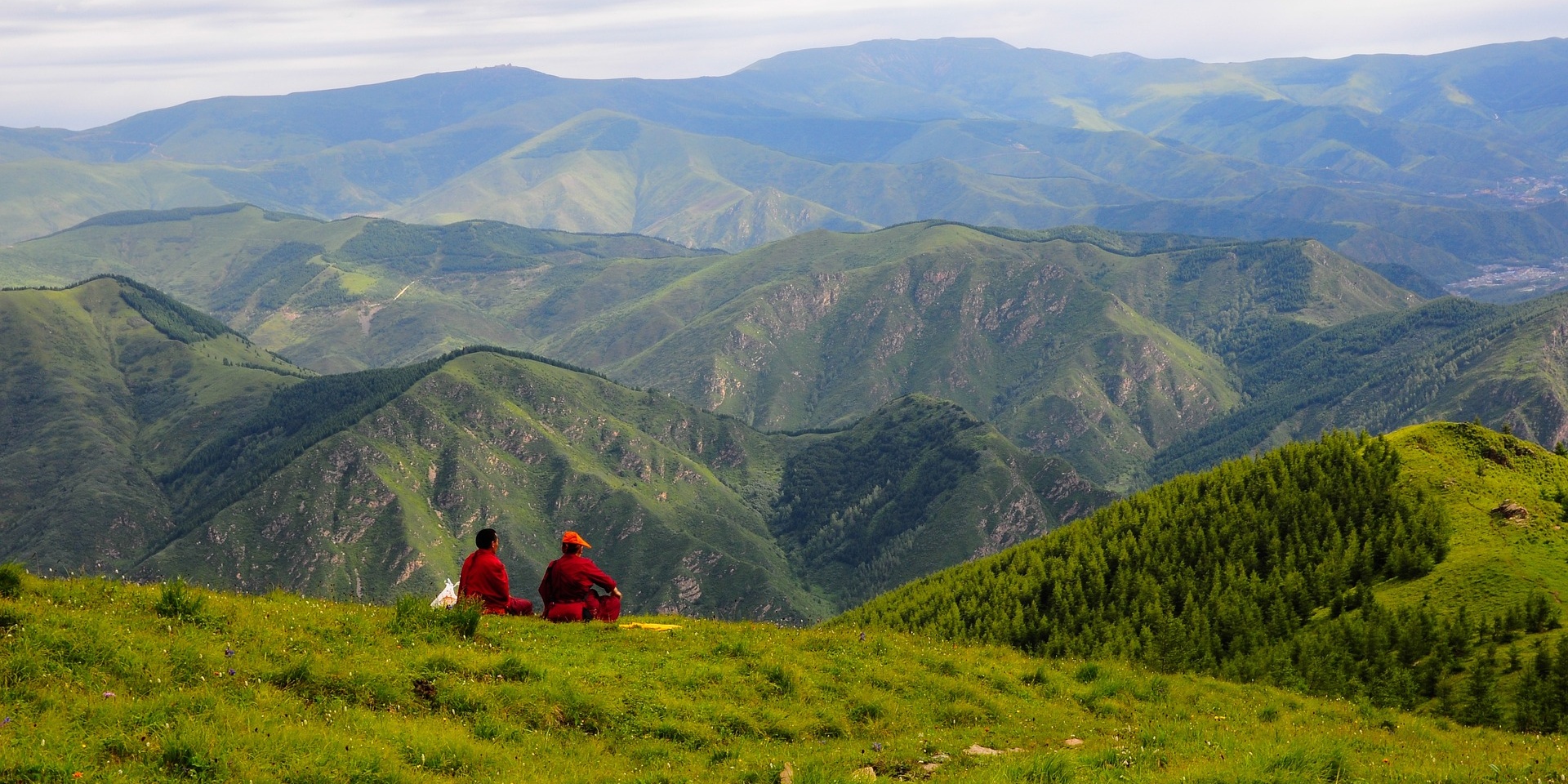

This six-day trip from Datong to Wutai Mountain is a double baptism of vision and soul.
The Yungang Grottoes are magnificent, the Wutai Mountain temples are solemn, and there are thousands of years of history shuttling between the monuments; the Pagoda of Fogong Temple is majestic, the Xuankong Temple is ingenious, the Wutai Mountain sanctuary is sacred, and the Buddhist Temple is quiet and profound, all of which are breathtaking to the people.
Yuncheng is named after the "City of Salt Transport" and is known as one of the important birthplaces of Chinese civilization, with the saying "5000 years of civilization watching Yuncheng". The legends of N ü wa mending the sky, Huangdi fighting Chiyou, Shun plowing Lishan, Yu chiseling Longmen, Leizu raising silkworms, and Houji farming all occurred in Yuncheng. Yuncheng is the hometown of the famous Shu Han general Guan Yu, and has produced literary and military talents such as Zhang Yi, Sima Qian, Xue Rengui, Wang Bo, Wang Zhihuan, Wang Wei, Liu Zongyuan, and Sima Guang. After arriving, take a car to visit one of the six most beautiful waterfalls in China - Hukou Waterfall (excluding small transportation) (visit for about 1.5 hours). The river mouth is as narrow as Hukou, hence the name Hukou Waterfall; It is the second largest waterfall in China and the largest yellow waterfall in the world. This is the inspiration for the composition of the Yellow River Cantata and a symbol of the great Chinese nation. Visit Shili Longcao, Heqing Gate, Ming and Qing Dynasty Pier, and Feihuang Memorial Monument; Experience the majestic momentum of the Yellow River's water rising from the sky. Here, you can experience the four natural wonders of "smoking underwater", "rainbow reaching the sky", "dragons playing in the waves", and "thunder in the valley". After the visit, check into the hotel.
After breakfast, take a car to visit Guangsheng Temple (excluding small transportation) located in Hongdong County, where Huoquan also originates. The temple area is lush with ancient cypress trees and beautiful mountains and clear waters. Guangsheng Temple was founded in the first year of Jianhe in the Eastern Han Dynasty (147), originally named Julushe Temple, and renamed to its current name in the Tang Dynasty. Guangsheng Temple is divided into two temples, upper and lower. The upper temple is composed of mountain gate, flying rainbow tower, Mituo Hall, the Shakya ManiHall, Tianzhong Tiandian, Guanyin Hall, Dizang Hall, wing rooms, corridors, etc. Founded in the Han Dynasty, it has undergone numerous renovations and renovations, and is now a relic of the Ming Dynasty reconstruction. Its structural form still retains the style of the Yuan Dynasty. Inside the mountain gate is the tower courtyard, where the Feihong Tower stands tall. Feihong Tower is the filming location for Tang Monk's tower sweeping in the CCTV 86 version of Journey to the West. After the visit, take a car to Xinzhou (308 kilometers, about 3.5 hours) and check into the hotel.
After breakfast, go to Mount Wutai to visit the world's five Buddhist holy places of world cultural heritage - [Mount Wutai] (including the first big ticket), the first of China's four famous Buddhist mountains; One of the top ten famous mountains in China; The top ten famous summer resorts in China; China National Geopark; The only dojo in China that combines both Han Buddhism and Tibetan Buddhism; Mount Wutai is called because the five peaks stand tall and the peak is flat as a platform; Due to the cold climate on the mountain and the absence of scorching heat in summer, it is also known as Qingliang Mountain. It is the temple of Manjusri Bodhisattva, who is in charge of wisdom among the four great bodhisattvas in Chinese Buddhism. Worship Mount Wutai, the temple with the most spiritual vows and the most popular incense sticks, is also called Wanfo Pavilion because it worships more than ten thousand Buddhas in size. According to legend, the Five Elders are the Five Dragon Kings. Due to their uneasy position and the unrest in the temple, a temple was built to worship them. Because the fifth master liked to watch plays, he built the only stage in Mount Wutai. Wuye Temple is the most popular in Mount Wutai. The locals say that offering incense on the first and fifteenth day of the lunar calendar is the most effective; Burning a stick of incense before dawn would be even better. (The correct way to worship Buddha and burn incense is: take out the incense and light it on a specially designed wax; face the main hall; silently say your wish in your heart; then worship three times; then turn left and worship three times in front of you; then turn right and worship three times in front of you, and finally turn your back to the main hall, face the incense burner and insert the incense into it.).
Visit the temple where the largest Manjusri Bodhisattva statue is located in Mount Wutai - [Jujusri Temple]. After the pilgrimage to the Luosui Temple, it was built in the northeast temple cluster area of the Dabai Pagoda, with the temple buildings facing north and south. The layout is rectangular, covering an area of 15725 square meters. There are 118 halls built, all of which are buildings from the Ming and Qing dynasties. Founded in the Tang Dynasty, it was one of the twelve courtyards of Dahuayan Temple (now Xiantong Temple) at that time, called Shanzhuge Temple.
Afterwards, take a car to Hunyuan to visit the first wonder of Mount Heng in northern China - the Hanging Temple (self climbing fee of 100 yuan/person), one of the top ten dangerous buildings in the world; The only unique temple in China that combines Buddhism, Taoism, and Confucianism; It is known for its three major characteristics of "strangeness and ingenuity".
After taking a car to Datong City, visit the ancient city wall of Datong, which is one of the relatively intact ancient city wall buildings in China. Datong City has a long history of urban construction. As early as when it was the capital of the Tuoba clan in Northern Wei, it had already built large-scale cities. After checking into the hotel, guests can enjoy local specialties of Datong in the evening.
A performance featuring the real-life situational drama 'Yanyun Memories' worth 198 yuan and a special tasting of bamboo cage feast, which depicts most of the classic stories of Jin merchants. Adapted from real events in the late Ming and early Qing dynasties, it tells the story of a Yanbei merchant who travels from Xikou to prosperity and returns. The stage lighting is dazzling, and the story is graceful and moving, leading us through a hundred years to witness the luxurious wedding of the young master of the Gao family and experience the rich culture of Jin merchants.
After breakfast, visit one of the four major grottoes in China, the Yungang Grottoes, which is a world cultural heritage site (excluding small transportation). The tour takes about 1.5 hours and is a classic masterpiece of the first peak period of Chinese Buddhist art; Together with the Mogao Grottoes of Dunhuang, Luoyang Longmen Grottoes and Maijishan Grottoes, it is called the four largest grottoes in China. In 2007, it became one of the first 5A level tourist attractions in China. Ranked in the top ten of the world's best popular tourist attractions. After the end, take a car back to Taiyuan (about 300 kilometers, about 4.5 hours by car), visit the 4A level industrial demonstration scenic spot - Shanxi Donghu Vinegar Garden, visit for about 0.5 hours, learn about the vinegar brewing process, and taste aged vinegar. Afterwards, take a car to Pingyao Ancient City, a world cultural heritage site and one of China's four ancient cities (approximately 120 kilometers, 1.5 hours by car), and check into a hotel to rest upon arrival.
After breakfast, visit the important military defense works built in the Western Zhou Dynasty, Pingyao Ancient City. (Friendly reminder: Pingyao Ancient City does not have a ticket to enter the city. If you want to visit any small scenic spots in the ancient city, you need to buy a pass of 125 yuan/person, otherwise you cannot visit the small scenic spots in the ancient city.) (Excluding the electric scooter in the scenic area, which costs 40 yuan/person). With its simple construction techniques and excellent materials, it can be called world-renowned; Along with the Xi'an City Wall in Shaanxi, the Jingzhou City Wall in Hubei, and the Xingcheng City Wall in Liaoning, they are listed as the four best existing ancient city walls in China. The best preserved county government office in China - Pingyao County Government Office, known as the most ancient government office. Visiting the pioneer of the financial and banking industry - Rishengchang Bank, pioneering the Chinese national banking industry and renowned for its ability to connect the world. The ancient Chinese "Wall Street" - a street from the Ming and Qing dynasties, exploring the ancient city's residential buildings, observing the ancient city's architecture, and appreciating the charm of the ancient city, crossing history and approaching the prosperity of the Ming and Qing dynasties. The Pingyao Confucian Temple, a rare building from the Song and Jin dynasties among the existing Confucian temples in China, is one of the six largest in China; The earliest surviving Confucian temple in China; The most well preserved Confucian temple complex in China; The largest group of statues of Confucius and Confucian sages in China; The largest existing exhibition of Chinese imperial examination history in China; The only professional photography museum in China. 【 Pingyao Ancient City: Ji's Old Residence Ancient Costume Travel Photography 】 (Approximately 1 hour in duration, electronic photography provided, additional fee for printing) Experience an ancient costume travel photography at the 600 year old Ji's Old Residence in Pingyao Ancient City,
Take a bus to Lingshi and visit one of the four most well preserved courtyards in China - the Wang Family Courtyard. The Wang Family Courtyard is known as the "Chinese Folk Palace Museum" and the "Forbidden City of Shanxi", and is known as the "Wang Family Returns without Visiting the Courtyard", meaning that after seeing the Wang Family Courtyard, there is nothing else to see. Its architectural layout inherits the courtyard style of the front hall and back bedroom formed during the Western Zhou Dynasty in China, resembling both a fortress and a city, built along the mountain. The four story courtyards are arranged symmetrically from low to high, with a main road in the middle, forming a very regular "king" shape and implying a "dragon" shape. After the tour, take a car back to Yuncheng (about 248km, about 3 hours by car) and stay in a hotel to rest.
Sleep until you wake up naturally, the beautiful journey is coming to an end, pack your bags and prepare to return to your warm home. Please bring all your personal belongings when leaving and check out on your own!
Tailor-made tours to suit your interests, schedule and budget
Dedicated travel advisors to help plan and adjust your itinerary
In-depth experiences of Chinese culture
Options for unique travel
If you have any questions please leave us a message or contact us via email and we will get back to you within 24 hours

Email: service@into-travel.com
Whatsapp/Tel: +86 18038016848
We use cookies to offer a better browsing experience, analyze site traffic, personalize content, andservetargeted advertisements. Please review our privacy policy & cookies information page. By clickingaccept,you consent to our privacy policy & use of cookies.